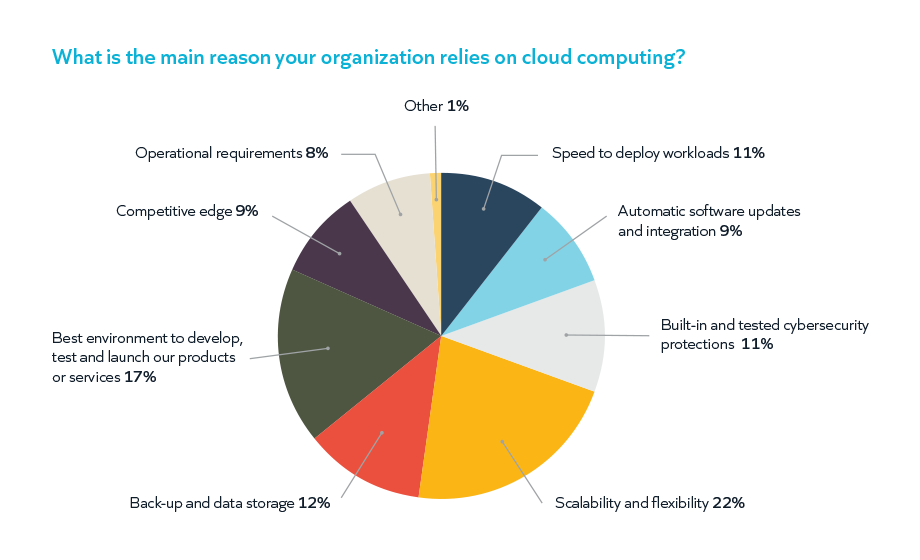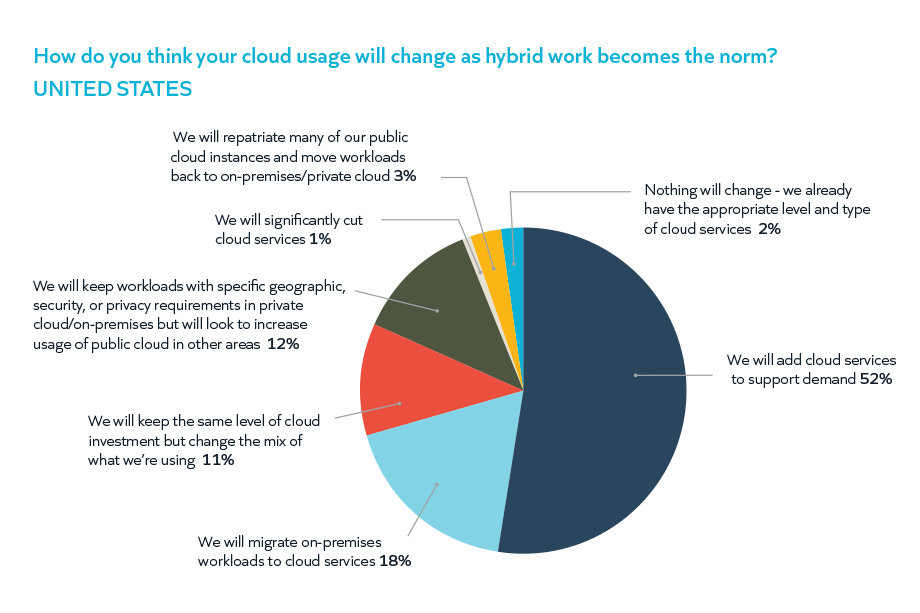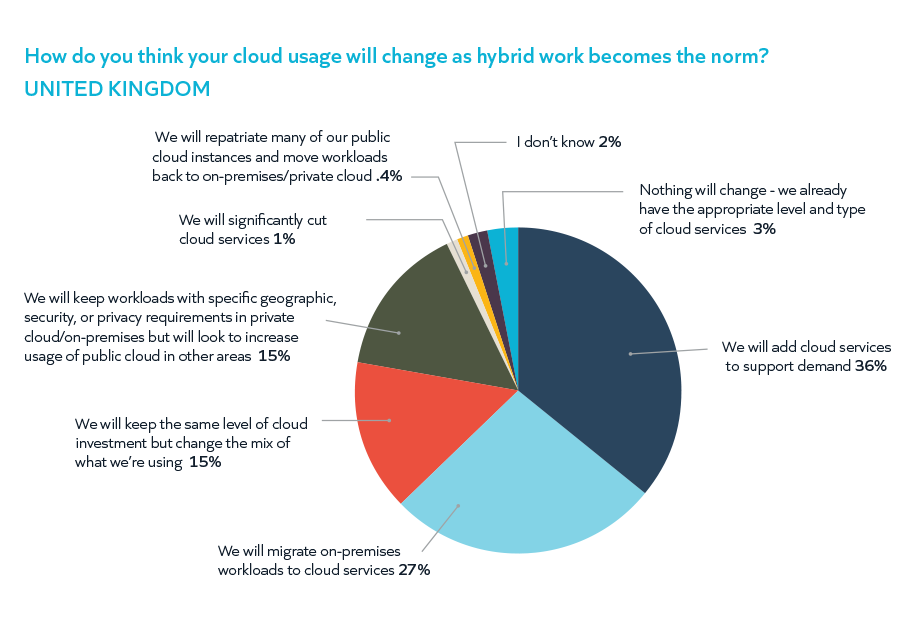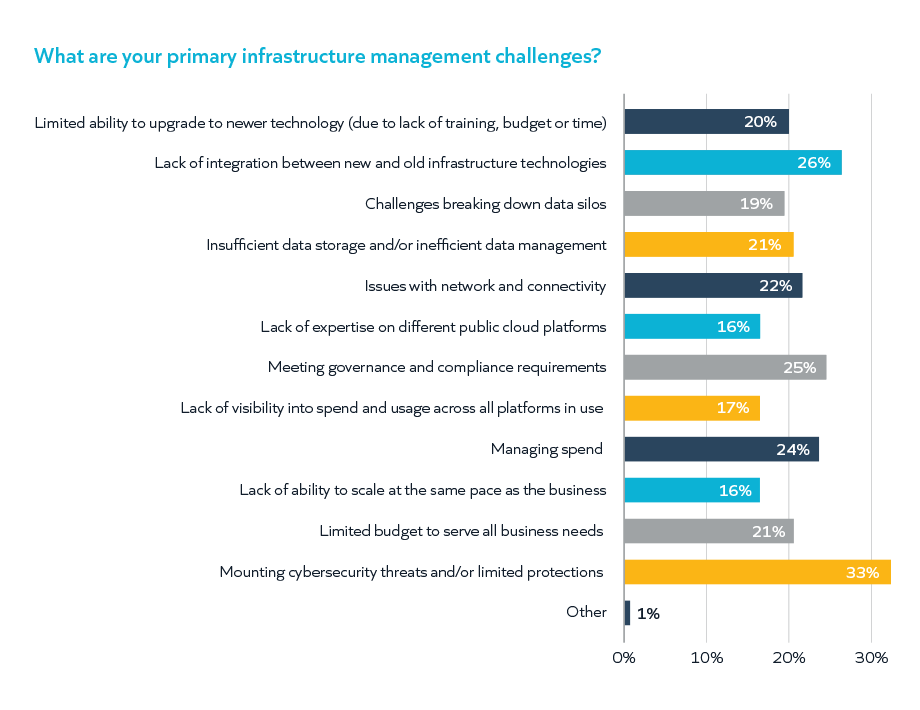Study: Reaping the Benefits of Cloud Begins With Facing the Realities

Cloud proved its worth during the pandemic. And, with no end to its growth trajectory in sight, it’s now time to review the current state of cloud infrastructure within the enterprise – how effective it has been and what must be done to derive its true value.
To learn more, Snow’s latest survey polled more than 500 IT leaders from organizations with over 500 employees in the United States and United Kingdom. We found that while 68% of IT leaders have a hybrid cloud strategy consisting of both public and private clouds, these organizations are now experiencing an array of cloud and infrastructure management challenges as the reality of these investments’ kicks in. While cloud was positioned as a faster, more secure and ultimately more affordable alternative to on-prem infrastructure, IT leaders are quickly realizing that cloud is just one piece of the IT management puzzle and not a one-size-fits-all solution.
Cloud is a growing necessity
Over the last 12 months, nearly seven out of 10 (71%) of all respondents had increased overall cloud spend. This figure rose to 72% in the US while only marginally lower in UK at 68%. This is a 26.7% increase compared to the 2020 findings, with 56% of IT leaders in 2020 expecting to increase their cloud spend. And it is no wonder, as nearly half of all IT leaders (46%) claim cloud services have been critical to operations during the pandemic.
Another 70% of IT leaders have increased the use of public cloud platforms, including AWS, Google Cloud and Microsoft Azure, while one-third of IT leaders (33%) have added an additional 26-50% capacity to their organizations’ cloud resources in the past year. This figure rose to 35% when looking at the UK alone.
When asked about the main reasons for relying on cloud computing, scalability and flexibility was cited by 22% of organizations, with another 17% of IT executives stating it is the best environment to develop, test and launch products and services.

Meanwhile, 44% of IT leaders believe they will add to cloud services to support demand as hybrid working becomes the norm. This figure was significantly higher in the US (52% of organizations) compared to 36% in the UK.

Additionally, IT leaders plan to move less workloads to private cloud in 2021 compared to last year. In 2020, 21% of respondents said they were bringing cloud workloads back on-premises whereas this year only three percent of US IT leaders and less than one percent of UK IT leaders plan to move workloads to private cloud.

But it hasn’t been all smooth sailing. Despite the hype surrounding the promise of cloud, many organizations are struggling to reap the full benefits.
Expectation vs. reality
Indeed, it seems that the expectation of cloud investments is not quite matching the reality, and there is more to be done to unlock the power of cloud. One area where this is particularly apparent is when it comes to cybersecurity. While 11% of IT executives rely on cloud computing for built-in and tested cybersecurity protections, approximately one-third (33%) of IT leaders stated that mounting cybersecurity threats are their greatest infrastructure management challenge. This disparity highlights that despite being a core driver for cloud adoption, cybersecurity protection is also a key concern for those integrating cloud. After all, applications are where vulnerabilities are most likely to occur. Many IT departments are not equipped with the right staff/skillset to adapt their security approach accordingly.
Lack of integration between new and old infrastructure technologies (26%), meeting governance and compliance requirements (25%) and managing spend (24%) closely followed as additional challenges. For the UK, in particular, managing spend was reported by 28% as a key challenge. Perhaps unsurprisingly, mitigating concerns about cybersecurity protections (24%) is at the top of IT leaders’ list of cloud management challenges they’d wish to solve in the blink of an eye – along with a lack of skilled IT staff (18%) and lack of cloud standardization (14%).

Could knowledge gaps be stifling cloud success?
It is clear the sheer acceleration of cloud infrastructure over the last 12 months has unearthed several management challenges for organizations, and a lack of skills and knowledge gaps between business leaders and IT management could be adding to this. There are some notable disparities when it comes to knowledge levels across the enterprise. Our research found C-level IT executives to be the most confident in their knowledge of cloud. In fact, 63% of those in this category rated themselves as experts in their knowledge of the different types of cloud (private, public and hybrid), along with three-quarters of company owners.
On the flip side, only 20% of IT managers, and just under one-third of IT directors (32%), rated themselves as experts – highlighting that greater education is needed for mid-level executives in order for them to manage cloud infrastructure effectively.
These figures become even more worrying when it comes to managing spend. While 71% of respondents claimed leadership is familiar with cloud investment, a quarter (25%) say leadership gets updates but do not question spend. Although there is no need for leadership to get involved if cloud spend is coming in within budget, we’ve often seen, cloud investments can sometimes bring unexpected (and pricey) costs. At that stage, leadership will jump in to understand the budget demands, but this can be tricky if they haven’t previously been engaged.
Cloud investments are showing no sign of slowing down, and while the benefits cannot be denied, without the necessary training, education and visibility to effectively implement and manage cloud, organizations could be limiting their ROI.
Learn more about how IT leaders can gain transparency surrounding cloud investments with Snow Commander.